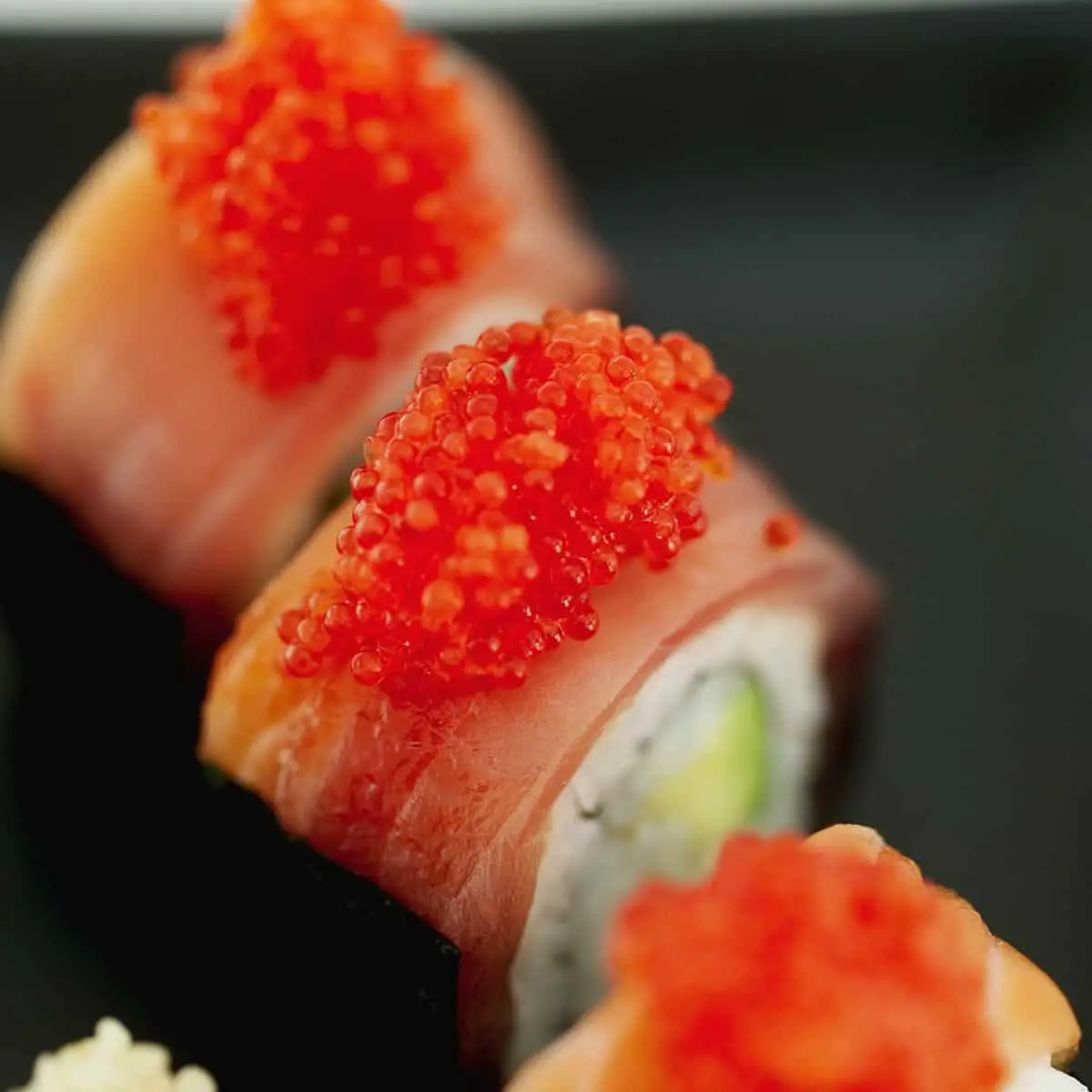
Fish Roe Sushi
Tobiko (とびこ) refers to flying fish roe, the colorful tiny fish eggs often used as a garnish for sushi and various seafood dishes. The roe is just 1 millimeter in diameter and has a delightful crunch and bursting sensation in your mouth.
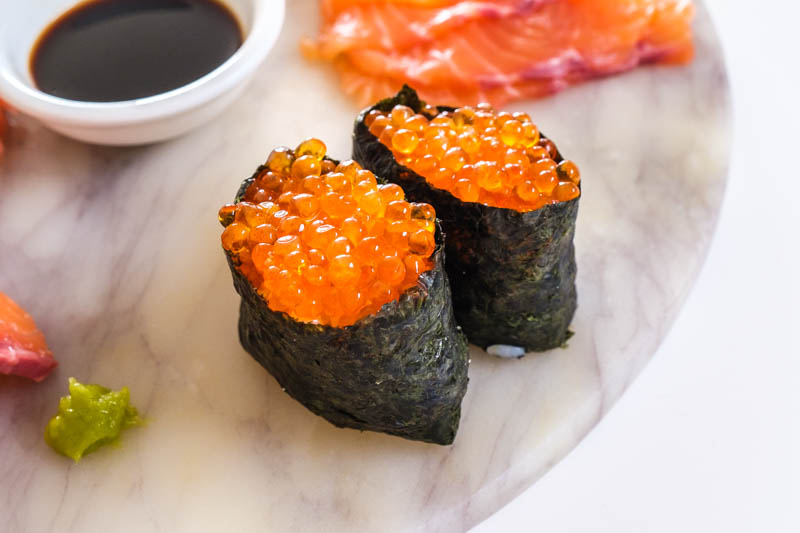
Salmon Roe Sushi Recipe The City Lane
Tobiko Gunkan Sushi. It is easy to confuse flying fish roe with smelt fish roe. Flying fish roe, also known as tobiko in Japanese, closely resembles masago in appearance and taste. It measures less than 1 millimeter in diameter - it is smaller than masago. It also packs a mildly smoky and salty taste and a sticky and crisp texture.
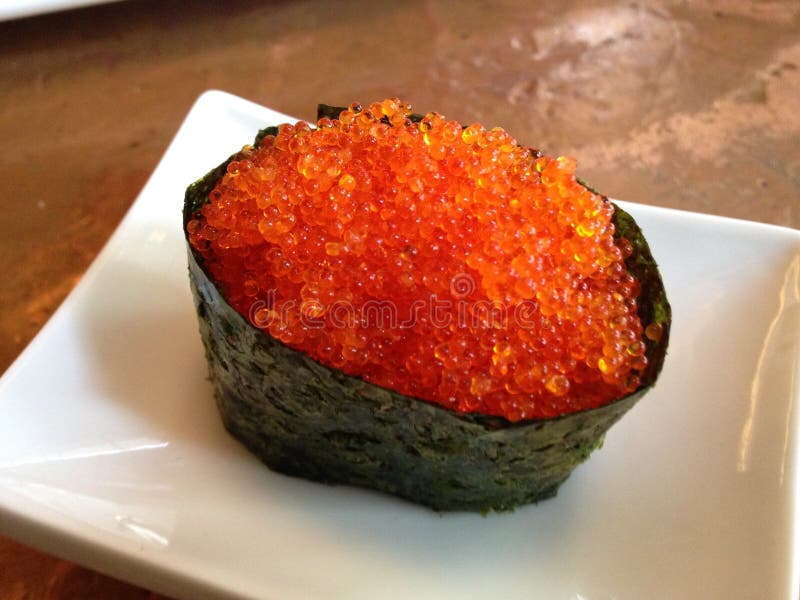
Tobiko (Flying Fish / Exocoetidae Roe) Sushi on Plate. Stock Photo Image of sushi, piece 77901768
Repeat steps on the remaining rice ovals to form 6 gunkan, or battleships. 2 nori sheets. . Fill the gunkan - Fill the top of the gunkan sushi with tobiko and carefully create a small well in the middle. Crack the quail eggs and place one in each tobiko well. Serve with soy sauce and wasabi if desired.
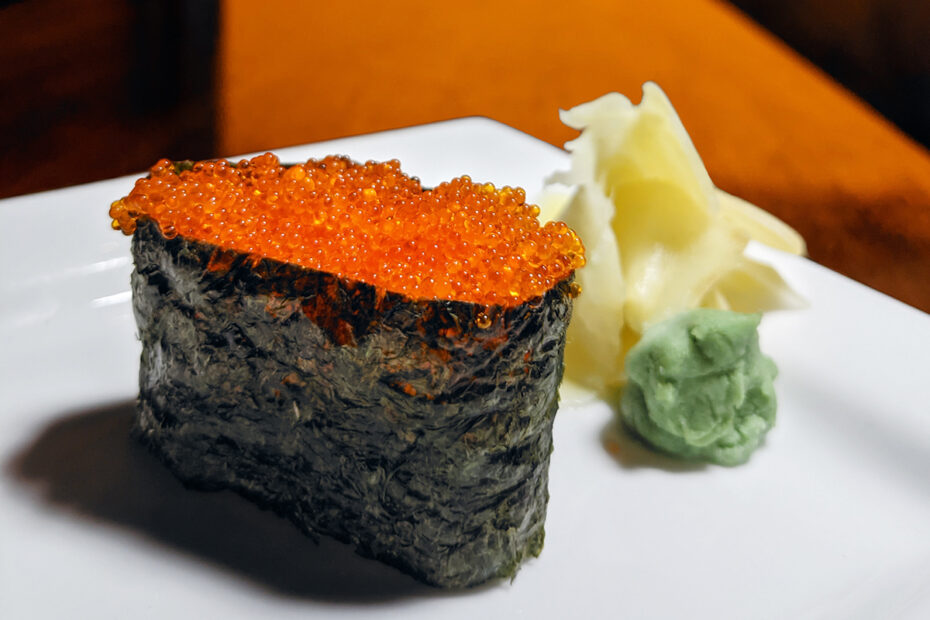
Tobiko All About Flying Fish Roe Sushi, Types of Eggs, + (2023)
Ikura, or salmon roe, is the most popular type of fish egg one will encounter in a sushi restaurant. There are different types of salmon used for ikura, with different-sized eggs. But all of them are much larger than capelin eggs. Interestingly, shrimp roe are the most similar to masago in appearance and flavor.

Flying Fish Roe Seaweed Sushi Roll Stock Photo Image of isolated, side 86616640
Fish roe refers to the eggs of certain marine animals and is known for its exquisite taste and unique texture. These tiny, delicate spheres can come in an array of colours and sizes, each offering a distinct culinary experience. Bursting with vibrant orange hues, salmon roe is a favourite among seafood lovers.

Sushi Roe Recipes Wedge
What is tobiko (flying fish roe)? You've probably noticed that there are some bright-colored stuff sitting on top of some Japanese sashimi or sushi rolls at restaurant or supermarket. Most of the time, these are tobiko eggs or flying fish roe. Tobiko eggs are small, pearl-like blobs that range from 0.5 to 0.8 mm in diameter.

Flying fish roe sushi stock photo. Image of sashimi, cuisine 1288328
Tuna, snapper, kingfish, salmon and octopus sashimi, snapper, tuna, salmon, kingfish, scallop, eel, flying fish roe and salmon roe sushi and mini california maki. $45.00. Hotate Miso Mayo Roll. Seared scallop with house special miso mayonnaise. $15.00. Salads Sashimi Salad. Raw fish & fresh vegetable. $12.00. Tofu Avocado Salad.

Sushi with fish eggs What's the roe on top called and is it healthy?
What is Tobiko? Tobiko is the roe of flying fish. The name is a shortening of tobiou no ko, or "flying fish eggs." There are dozens of species of flying fish, of which several are popular for their roe. Flying fish are generally fish of the open ocean and are most often found in tropical and subtropical waters. They feed primarily on zooplankton.
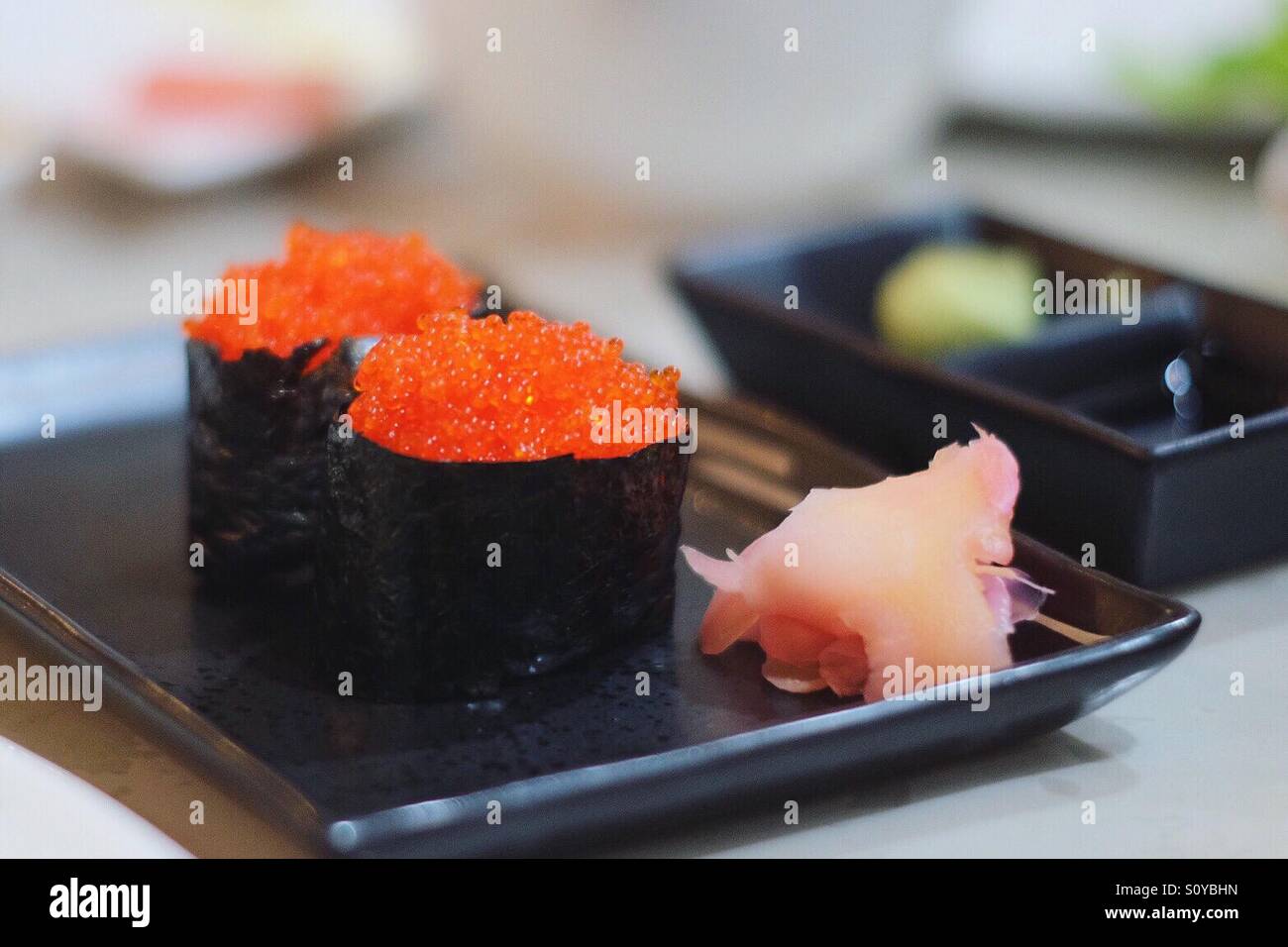
Flying fish roe sushi Stock Photo Alamy
Ikura is the Japanese name for Salmon Roe. It comes in a reddish orange colour and has a rich savoury flavour. Typically it is served on top of sushi rice wrapped with Nori seaweed. Ikura is harvested when Salmon return to freshwater for spawning. The timeframe for spawning can vary with different Salmon spawning at different ages.
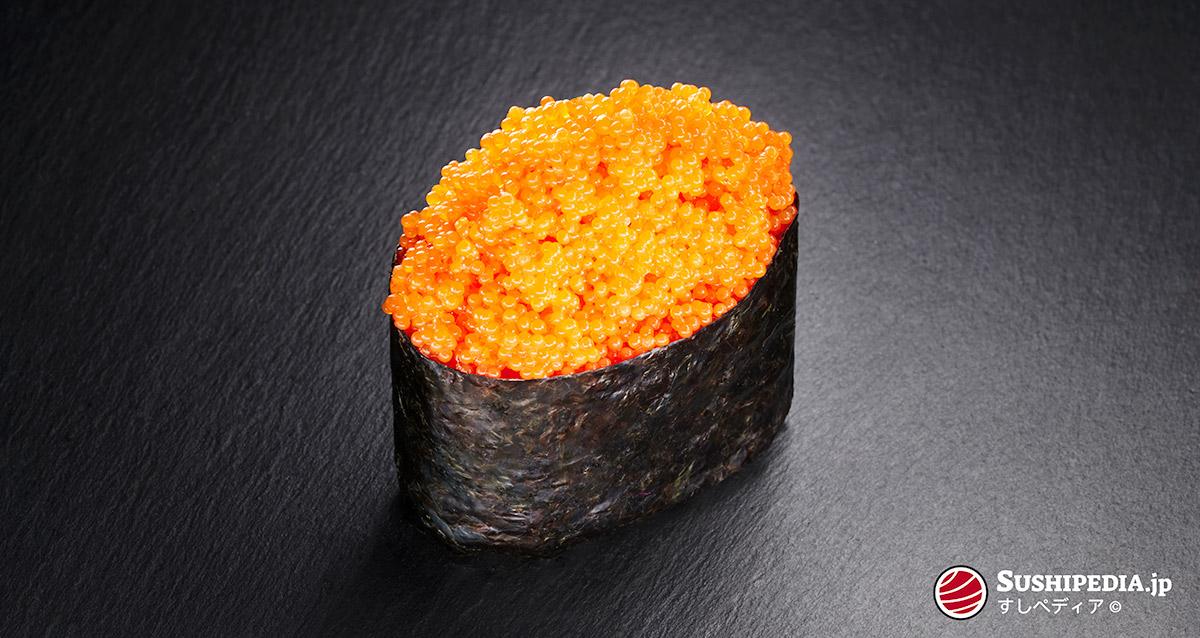
Tobiko Sushi 〚 flying fish roe 〛 【飛子】 (Information) Sushipedia
This roe is clear, with a golden hue. Tobiko adds a colorful accent to the table. It has a pleasant texture and bursts in the mouth when crushed. Tobiko is a bit sweeter than ikura. Japanese, who have been eating fish for centuries have developed a culture of marinating tobiko in salt.

Salmon Battleship Sushi filled with Salmon Roe Recipe
Masago comes from the capelin, a fish that is part of the smelt family. Many sushi restaurants often use masago in place of tobiko (or try to pass it off as tobiko) because it is much less expensive than the flying fish roe. However, both tobiko and masago are mainly relegated to garnishes in upscale Japanese and sushi restaurants.

How to Make Nigiri & Sushi Roll Salmon Roe & Flying Fish Roe Sushi YumYumCook YouTube
December 2, 2022 If you've eaten sushi you've likely already seen or tried tobiko. It's used to add color and a crunchy texture to many sushi rolls, This post is dedicated to all things tobiko. Learn about the species used, different types of tobiko, flavor profiles, sustainability, and more. What is Tobiko? What Does Tobiko Taste Like?
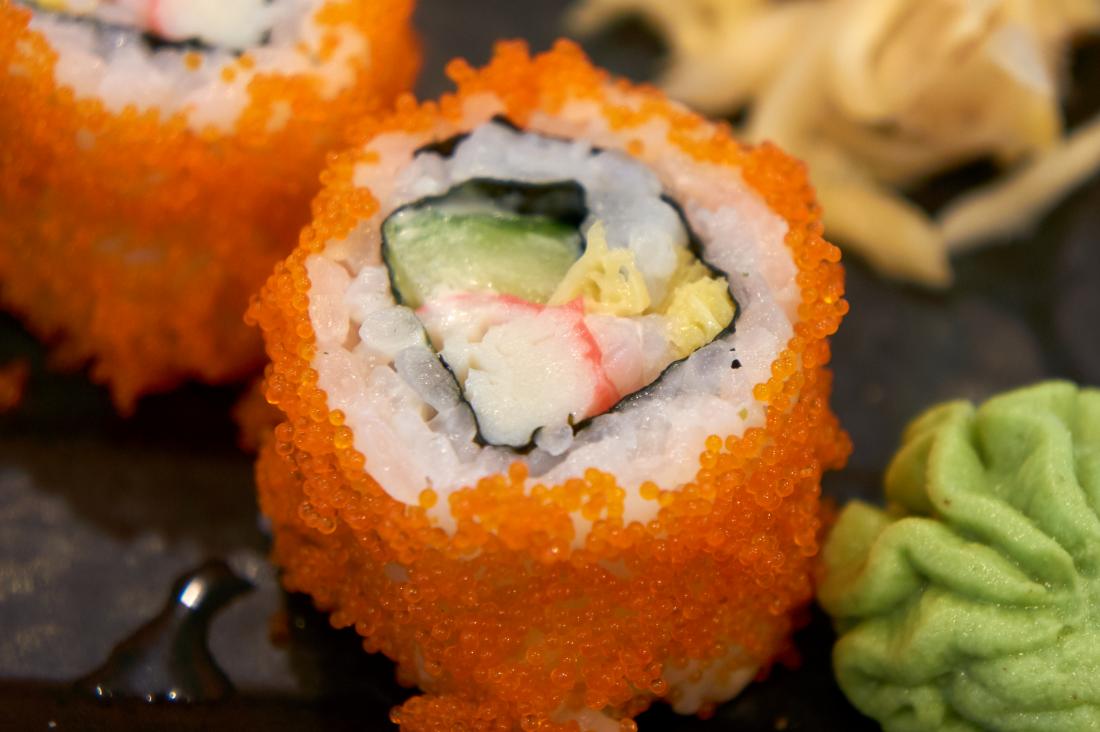
Tobiko, masago, ikura, caviar Similarities and differences
01 Fish Roe Ikura JAPAN 4.3 shutterstock Ate it? Rate it Wanna try? Ikura (also known as salmon roe) are round, almost transparent salmon eggs, an unusual ingredient which is especially popular in Japan.

Tobiko (flying fish roe) Nigiri topped with quail egg. Yelp
Tobiko (flying fish roe) Start cooking sushi rice at least 30 minutes before you plan to make the sushi rolls. When rice cools, season with vinegar, sugar, and salt following the instructions mentioned here. Prepare tuna fish by cutting the steak into 1-cm thick strips. Repeat the same for salmon fillets.
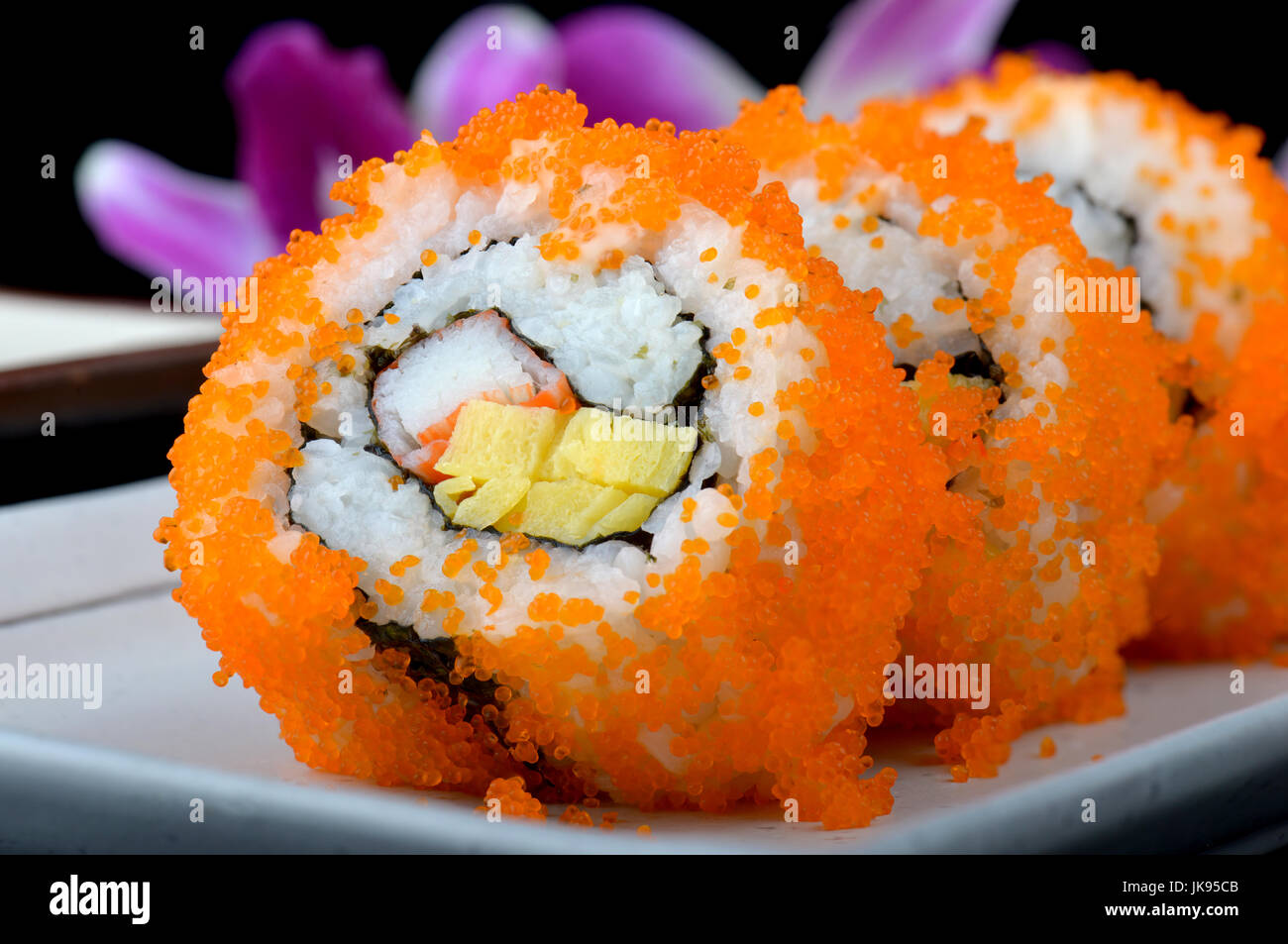
California roll or Japanese sushi roll with flying fish roe or shrimp roe cut and set on white
Whether enjoyed as a piece of nigiri in the form of a cluster of small eggs sitting atop a clump of rice and bound together by seaweed or sprinkled generously on top of various sushi rolls, fish roe has a number of uses in Japanese cuisine. Like other types of eggs, fish roe is high in vitamins and protein, as well as cholesterol.

Red tobiko (flying fish roe) sushi closeup Stock Photo Alamy
This term refers to fish eggs used in a dish or included in various garnishes. There are three common types of fish roe used in sushi, namely Tobiko, Masago, and Ikura. Let's talk about the first type; introducing tobiko. Tobiko Tobiko is roe laid by flying fish species.